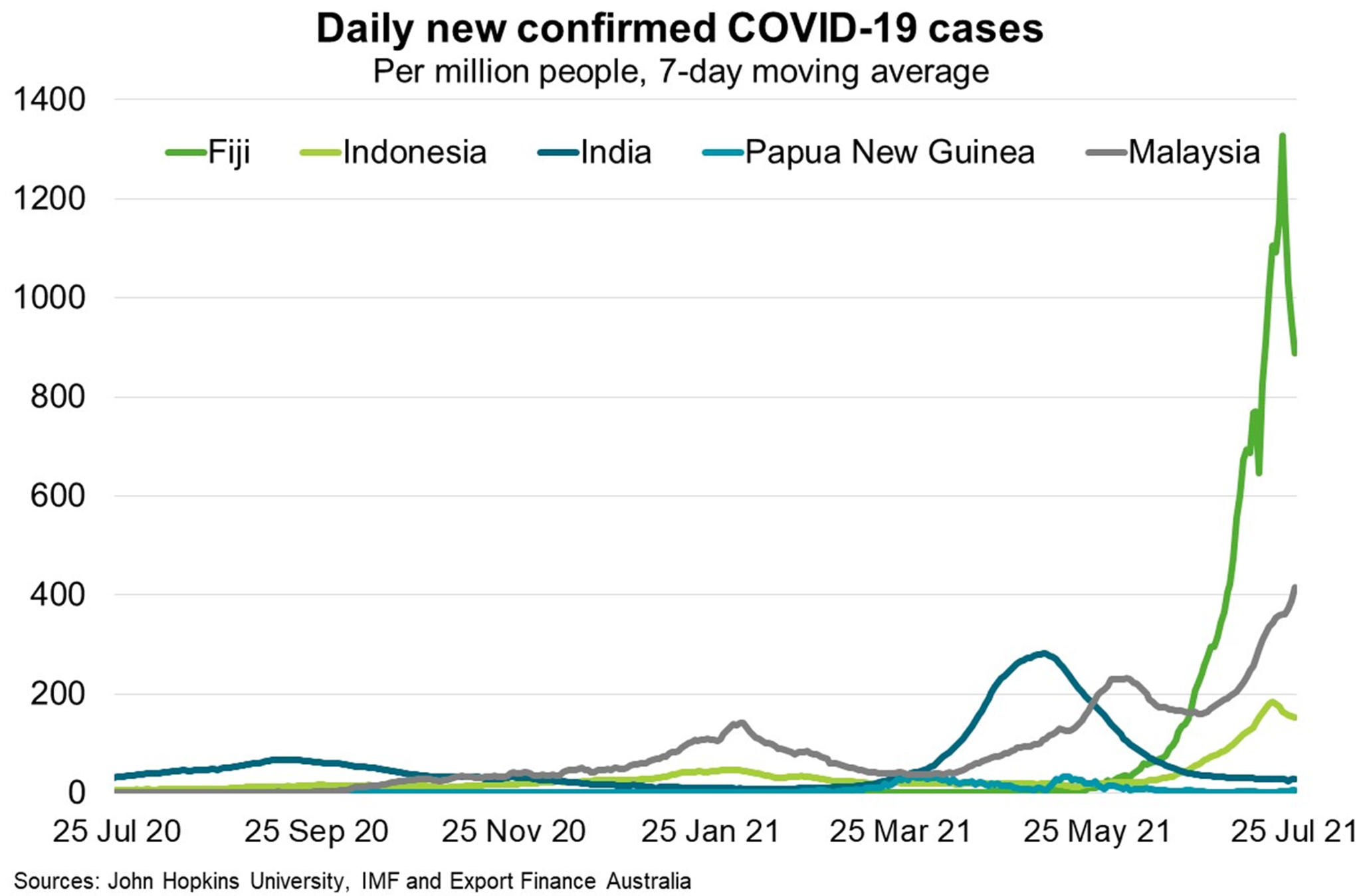The Asian Development Bank (ADB) forecasts GDP in Pacific Island countries (PIC) will expand 0.3% in 2021 compared to 7.2% for developing Asia. Only nine of 45 ADB-assessed economies are expected to contract in 2021, of which seven are PICs.
Divergent infection and vaccination rates shape economic prospects in Fiji and PNG—the two largest economies in the Pacific, comprising over 80% of PIC GDP. In Fiji, COVID‑19 is rampant. The country has one of the highest per capita averages of daily new cases in the world; well above the maximum reached by India at the peak of its recent outbreak (Chart). However, Fiji’s vaccination rate is rising quickly, with 70% of the eligible population (410,000 people) having received at least one vaccine dose. In contrast, while PNG has curbed its recent outbreak, the Delta variant was first reported this month and the country has one of the lowest shares of people fully vaccinated against COVID-19 in the world. Mass inoculation is frustrated by fragile public health institutions, a dispersed population and vaccine hesitancy. One survey found that just 39% of respondents (excluding health workers) were willing to be administered a COVID-19 vaccine.
The pace of recovery also hinges on the external environment. For commodity exporters like PNG, economic expansion is plausible this year, while recovery in tourism-exposed countries like Fiji will take longer. Any recovery is vulnerable to soaring global infections of the highly contagious Delta variant and the risk of a new vaccine-resistant variant as international travel intensifies and partially vaccinated populations mix. PICs also face unique challenges—high public debt, lost correspondent banking relationships and outsized exposure to climate change. PNG and Fiji purchased $3.4 billion (1%) of Australian exports in FY2020 and PNG is an important investment destination for Australian resources firms.

